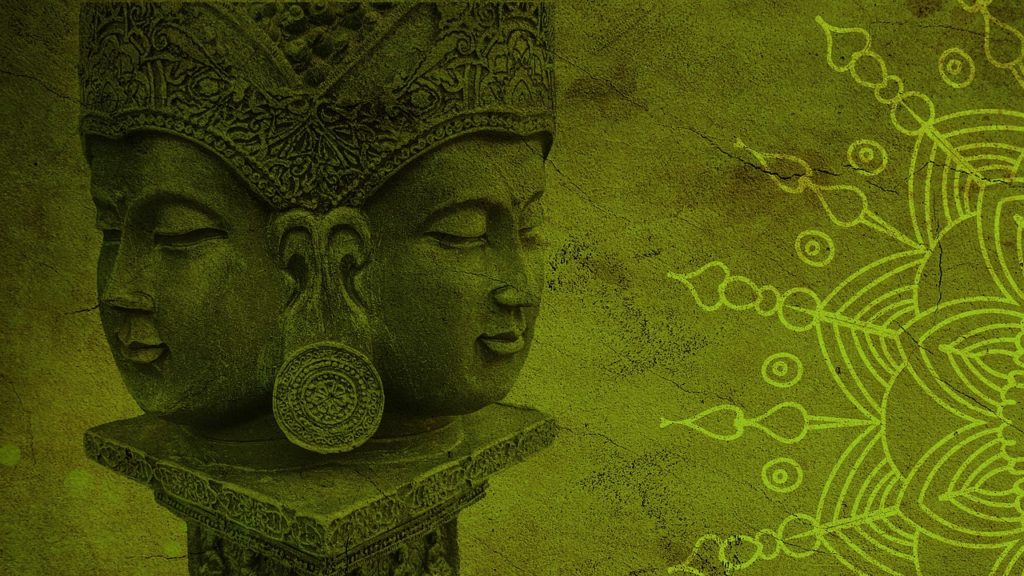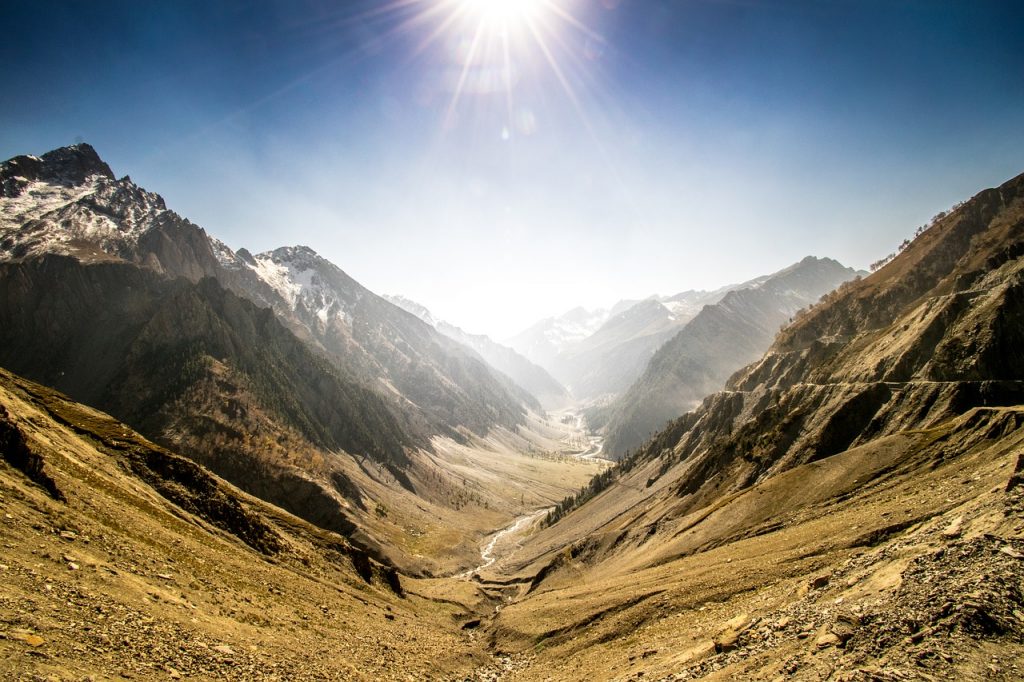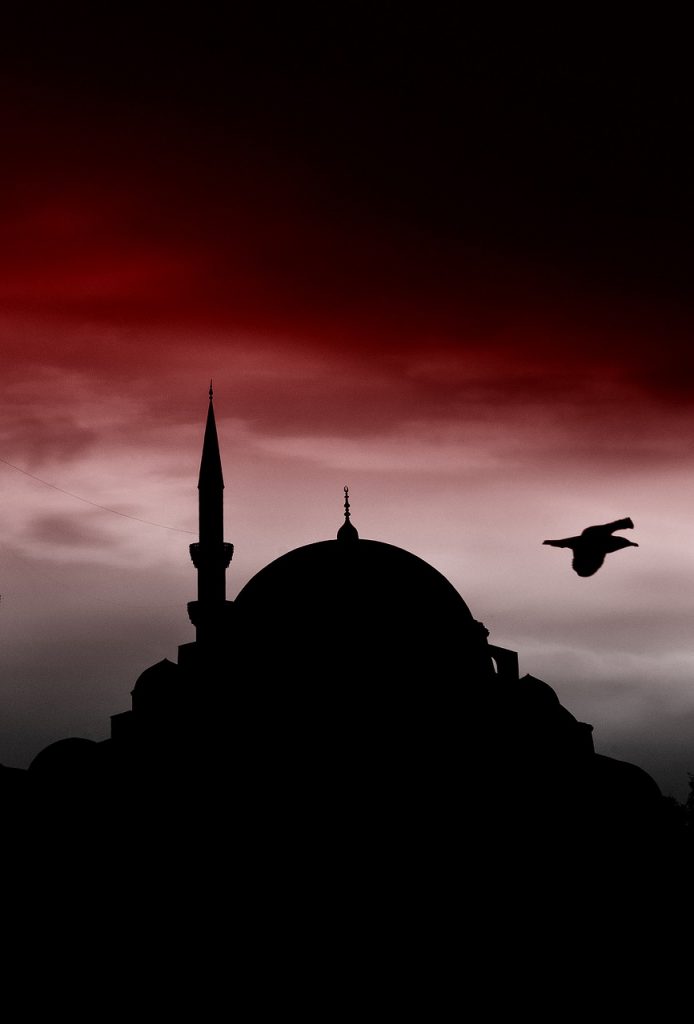Buddhism in Kashmir mainly revolves around Ladakh, where most Buddhist followers in Kashmir reside. In other words, Ladakh, which was once part of Kashmir, is now a Buddhist-dominated UT. However, how did Buddhism come to Kashmir? What is the history of Buddhism in Kashmir? There’s not one but several theories and beliefs around it. Let’s attempt to explore the origin of Buddhism in Kashmir and its history in the region. Alongside, let’s look at some of the Buddhist monasteries across the valley.
The Origin of Buddhism in Kashmir
Most believe that Emperor Ashoka introduced Buddhism in Kashmir. However, some historians are of the view that Kashmir had many Bauddha Viharas much before Ashoka brought Buddhism to the region. According to the Chinese, Buddhism spread in Kashmir a few decades after the Mahaparinirvana of Tathagata.
Many people have agreed that Mogaliputra Tissa, Ashoka’s Buddhist minister sent Majhantika, a Buddhist authority from Varanasi, to spread Buddhism in Kashmir and Gandhar. However, no stone-edicts of Ashoka have been found in Kashmir. On the other hand, many Chinese scholars believe Madhyantik, the disciple of Buddhist scholar Anand, was the first to preach Buddhism in Kashmir.
Sarvasttvad was considered the most prestigious philosophy of northern India and had a Kashmir connection, despite Mathura as its origin. Some believe that Buddhist thinkers came to Kashmir to protect the Sarvasttvad, and it is in Kashmir that they decided upon the purest form of Sarvasttvad. Additionally, an in-depth and authentic commentary, named Vaibhashika, of this philosophy was written.
Besides, Sarvastivadi, Abhidharma’s basic scripture, is supposed to have been divided into six volumes. It was completed in Kashmir by Vasubandhu, Katyayani’s son.
Buddhism’s history in Kashmir isn’t clear after the downfall of the Maurya dynasty. But it might have kept progressing. It is believed that Milind (King of Gandhar) and Nagsen were indulged in a discussion on Buddhism. After the discussion, Milind adopted Buddhism and became an Arhata.
King Kanishka helped Buddhism settle in Kashmir. People believe that he adopted Buddhism through Sudarshana, a Kashmiri king.
Buddhism had official protection in the seventh-eighth century during the reign of King Lalitaditya Muktapeeda, who served Hindus and Buddhists. However, after that, Buddhism started declining in Kashmir. The Lohara dynasty attempted to revive Buddhism in Kashmir. However, by the time King Harshvardhan came in, Buddhism in Kashmir had already become history.
Kashmir remained under Buddhism’s influence for almost a millennium. Hence, even today, one can find remains of Buddhist influence in Kashmir. Some Viharas in Kashmir include Jalora Vihara at Zalur Zainageer (Sopore in Baramulla), Vitastatra, and called Vyathavotur in the Anantnag district. Furthermore, King Ashoka (not the one from the Maurya dynasty) had constructed a stupa in the present-day Budgam. Some other areas include Rattani Pura, Parihaspora, Raithan, Harwan, Ahen, etc.
Buddhist Monasteries in Jammu and Kashmir
Buddhist influence in Jammu and Kashmir led to the establishment of several monasteries across the region. Today, they are maintained by resident monks.
The Buddhists inherited a long artistic tradition, naturally compliant with their old models, although there was a difference in the material they used and the decoration they elaborated. They used stunning gray limestone, which was simpler to carve.
The plinth of the old stupa, which was a rectangular structure with a single flight of steps, got expanded into a square with multiple offsets on each side projecting far into the courtyard and flanked on either hand by side walls adorned with sculptural reliefs.
The larger buildings had plinths comprising a double terrace, each consisting of five courses of finely chiseled, large stone blocks. The two lowest courses, coupled with the fourth course were plain. The third one was fashioned into a round torus molding and the topmost into a fileted torus or cyma recta.
Let’s look at a few Buddhist monasteries in J&K.
- Rajavihara of Parihasapura
Parihasapura (in the Pattan tehsil of Baramulla) is left as the only surviving example of a Buddhist chaitya or temple. The monument is a square chamber constructed upon a square base similar to that of the stupa, save for the offsets and three stairs, enclosed by a plain wall, with an entrance facing the temple stairs. The stairs led to the portico admitting the individual to the sanctum.
- Basgo Monastery
At 40 kilometers from Leh, Basgo Monastery is a beautiful ancient monastery built by Namgyal rulers in 1680. The monastery is situated on a mountain over the ruins of the old town. It offers a spectacular view of the surrounding hills and the horizon. The monastery features mural paintings and Buddha statues.
- Alchi Monastery
Another monastery on this list is the Alchi Monastery, situated in the Alchi village of Leh district, under Ladakh Autonomous Hill Development Council of the Ladakh Union Territory. Alchi is a complex of several Buddhist temples. It features stunning paintings in the interiors that reflect Buddhist and Hindu influences. Other parts of the monastery include Sumtseg structures, an assembly hall, temples, etc.
Alchi was built by the great translator Guru Rinchen Zangpo between 958 and 1055. However, some inscriptions suggested the period later in the 11th century.
- Diskit Monastery
The Diskit Monastery, also called Diskit or Deskit Gompa, is the oldest and also largest Buddhist monastery in the Nubra Valley of Ladakh. The monastery belongs to the Gelugpa sect of Tibetan Buddhism. Changzem Tserab Zangpo, a disciple of Tsong Khapa, founder of Gelugpa, founded it in the 14th century. Deskit Gompa is known for its attractive Maitreya statue. The statue against the backdrop of the blue skies and the rugged mountains forms an incredible sight to watch! The interiors feature murals.
- Thiksey Monastery
Also called Thiksey Gompa, this monastery is located on the top of a hill in Thiksey, around 19 kilometers east of Leh in Ladakh. It is situated at 3,600 meters and boasts an incredible 12-story structure. The monastery was built in 1430 AD, and it belongs to the Gelugpa order of Buddhism. It features a Lakhang Nyerma, a temple of Goddess Dorje Chenmo. In addition, the monastery is home to a few more shrines.
- Phugtal
Another unique monastery in Kashmir is Phugtal Gompa. The monastery is constructed on the mountain face against the mouth of a natural cave. The lateral gorge of the Lungnak River flows through the natural cave. Another unique factor of Phugtal is that it is one of the only Buddhist monasteries in Ladakh, which can be accessed only by foot. The monastery signifies a honeycomb structure.
We hope you enjoyed reading about the history of Buddhism in Kashmir and Buddhist monasteries in Kashmir.



